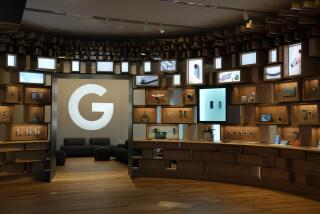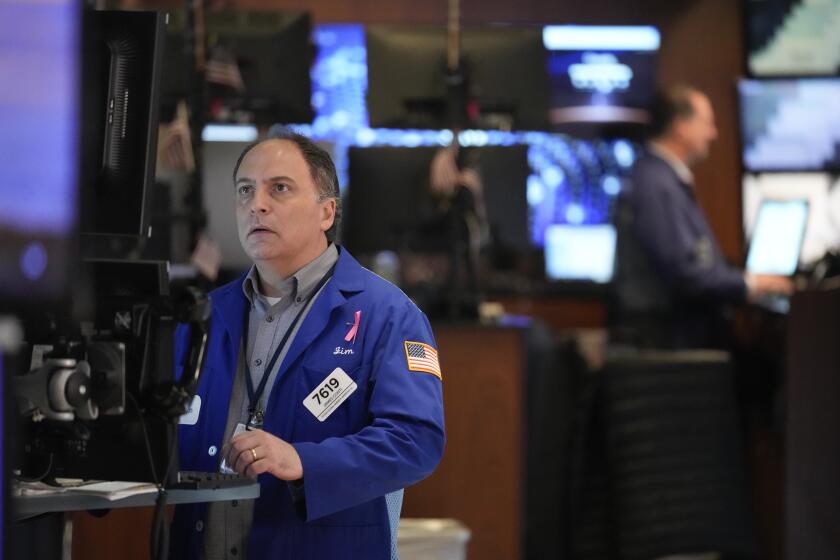Spy Suspect Was Entrapped, Attorney Claims
To federal prosecutors, the indictment of a former Lockheed engineer on attempted espionage charges serves as a warning to other disgruntled aerospace workers tempted to sell classified information about secret defense projects.
But on Friday, after John Douglas Charlton appeared before a magistrate in U. S. District Court in Los Angeles, his attorney said federal authorities had found the wrong “scapegoat.”
Charlton, a burly 62-year-old who lives with his ailing mother in Lancaster, is accused of trying to peddle secret blueprints and related plans involving the Sea Shadow, a Navy stealth project built by a Lockheed division in Sunnyvale.
Assistant U. S. Atty. George Newhouse said the indictment alleges that Charlton “leaped at the opportunity” to sell classified and confidential material concerning the 160-foot-long ship that was designed to be the seagoing version of the Stealth jet fighter.
Defense attorney Donald C. Randolph, however, told reporters that Charlton was entrapped by an FBI agent posing as an agent of a foreign government. The agent, Randolph said, enticed Charlton into actions he never would have taken on his own.
*
Charlton, an expert in noise-suppression technology, surrendered to federal authorities on Friday. A Navy veteran, he worked from 1980 to 1989 on classified defense projects for Lockheed in Burbank and Sunnyvale. He opted for early retirement amid massive defense industry cutbacks.
U. S. Magistrate Robert N. Block released Charlton within hours of his surrender when the former engineer promised to post a $100,000 bond. During the brief court appearance, Charlton seemed dazed. At one point, he asked to sit down, complaining that he felt “woozy” from a blood-sugar disorder.
After the hearing, Charlton told reporters he was only trying to raise money to build his newest invention, a “lung-cleaning machine.” In an interview with The Times on Thursday, Charlton acknowledged selling information but said it pertained to his own unclassified projects.
Randolph said he will seek a psychiatric evaluation of his client, but declined to comment on Charlton’s mental state.
Randolph also insisted that no crime was committed because the information his client is accused of trying to peddle has been published in engineering trade journals and magazines such as Popular Science and Popular Mechanics.
The lawyer showed reporters several magazines containing lengthy articles about “the secret ship.” One article, “Digitalcorrelator Defeats Noise,” appeared in a trade journal in 1991 and was written by Charlton. “I don’t think this is a good case for the government to use for the example they want to set,” Randolph said.
But Newhouse replied: “This isn’t stuff that’s in Popular Mechanics.”
Lockheed built a single Sea Shadow for the Navy, primarily as a testing tool for defense innovations. The $195-million project was developed over 10 years and the first tests began in 1985.
The Sea Shadow made its public debut in April, 1993, during three weeks of daytime tests off Santa Cruz Island. Journalists and other observers attended the tests.
The indictment states that several months later--in July and August, 1993--Charlton met with the undercover agent about half a dozen times at various locations in Lancaster. Defense attorney Randolph maintains that the agent initiated contact.
The indictment alleges that Charlton received $50,000 in cash and handed over several sketches and documents at a final meeting inside a Lancaster motel room.
Randolph said the government made secret recordings of the meetings, but he had yet to receive copies of any tapes or transcripts.
The defense attorney said he had been negotiating with the U. S. Attorney’s office since 1993, trying to convince prosecutors that the information allegedly sold had been declassified or otherwise reached the public domain.
“Obviously, the government thought otherwise,” Randolph said.
In the 10-count indictment returned Thursday, the federal grand jury also alleged that Charlton lied when he claimed at a debriefing that he did not possess any classified materials when he retired early from Lockheed in December, 1989. And, a companion indictment charges him with illegally possessing a homemade silencer, discovered during an FBI search of his home in September, 1993.
“I’m just torn up,” Charlton said as he left court Friday.
Earlier, Charlton had told The Times that the agent claimed to be from “the French Ministry of Agriculture or something” and wanted to buy “only the classified stuff.”
Charlton said in an interview Thursday night that most of the documents he sold were his own proposals, which Lockheed refused to fund. The proposals dealt with his plans for a chemical coating that, when applied to submarines, would make them virtually invisible to enemy sonar.
Charlton said he sold his plans in the hopes they would be passed on to North Atlantic Treaty Organization allies for development. Otherwise, he said in the interview, the consequences would be dire--the destruction of civilization.
Prosecutor Newhouse said there was no rush to seek the indictment against Charlton because the all the secret or confidential material was taken from his home during the 1993 search. Charlton also was not considered a risk to flee.
*
As he left the courtroom Friday, Charlton seemed confused, and his replies to reporters’ questions were disjointed.
“This [prosecution] is such a colossal waste of money,” he said. “All this money was supposed to be put into a lung-cleaning machine. Have you ever looked at autopsy photos and seen all the junk in people’s lungs?”
His machine, Charlton added, would benefit “everybody in civilized society.”
As a condition of Charlton’s release, the magistrate ordered him to turn over all weapons under his control to the FBI while the case is pending.
Newhouse said in court that agents found 54 guns, including “a handful” of now-illegal assault rifles, a Luger 9-millimeter semiautomatic pistol and homemade silencer, and a 150-foot detonation cord.
Charlton told reporters he purchased the guns as “rewards” for himself when he reached personal records for running and weight training while recovering from a knee injury.
He is scheduled to appear in federal court Tuesday to enter a plea.






